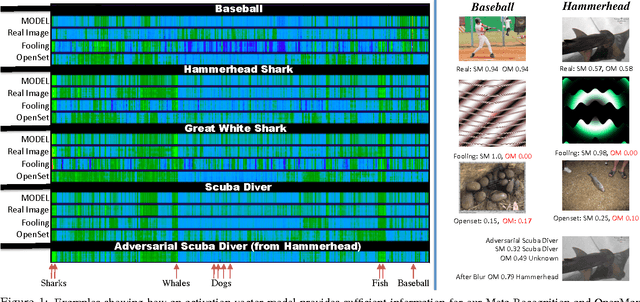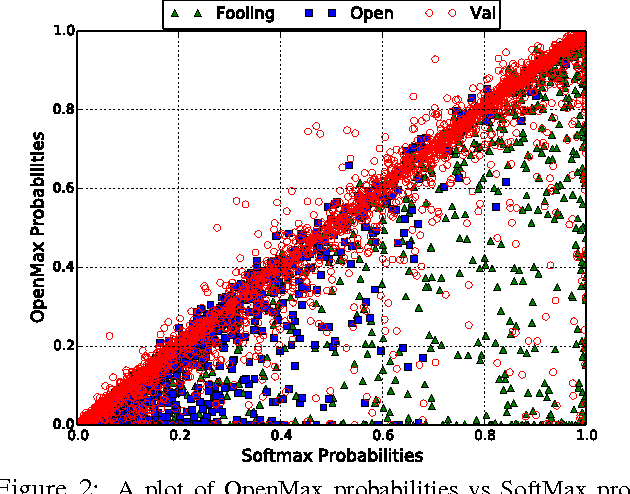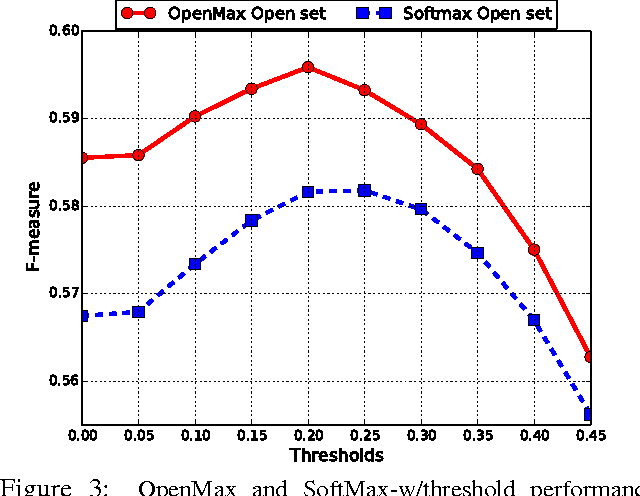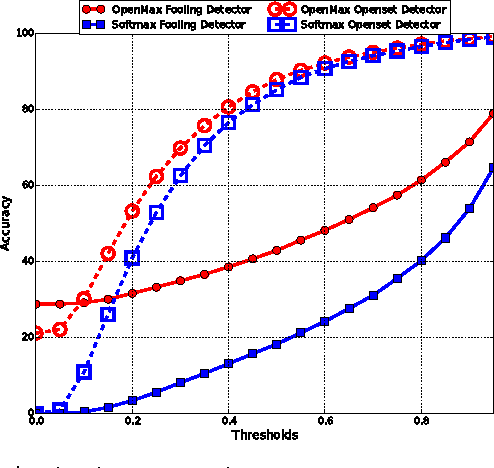Towards Open Set Deep Networks
Paper and Code
Nov 19, 2015



Deep networks have produced significant gains for various visual recognition problems, leading to high impact academic and commercial applications. Recent work in deep networks highlighted that it is easy to generate images that humans would never classify as a particular object class, yet networks classify such images high confidence as that given class - deep network are easily fooled with images humans do not consider meaningful. The closed set nature of deep networks forces them to choose from one of the known classes leading to such artifacts. Recognition in the real world is open set, i.e. the recognition system should reject unknown/unseen classes at test time. We present a methodology to adapt deep networks for open set recognition, by introducing a new model layer, OpenMax, which estimates the probability of an input being from an unknown class. A key element of estimating the unknown probability is adapting Meta-Recognition concepts to the activation patterns in the penultimate layer of the network. OpenMax allows rejection of "fooling" and unrelated open set images presented to the system; OpenMax greatly reduces the number of obvious errors made by a deep network. We prove that the OpenMax concept provides bounded open space risk, thereby formally providing an open set recognition solution. We evaluate the resulting open set deep networks using pre-trained networks from the Caffe Model-zoo on ImageNet 2012 validation data, and thousands of fooling and open set images. The proposed OpenMax model significantly outperforms open set recognition accuracy of basic deep networks as well as deep networks with thresholding of SoftMax probabilities.
 Add to Chrome
Add to Chrome Add to Firefox
Add to Firefox Add to Edge
Add to Edge